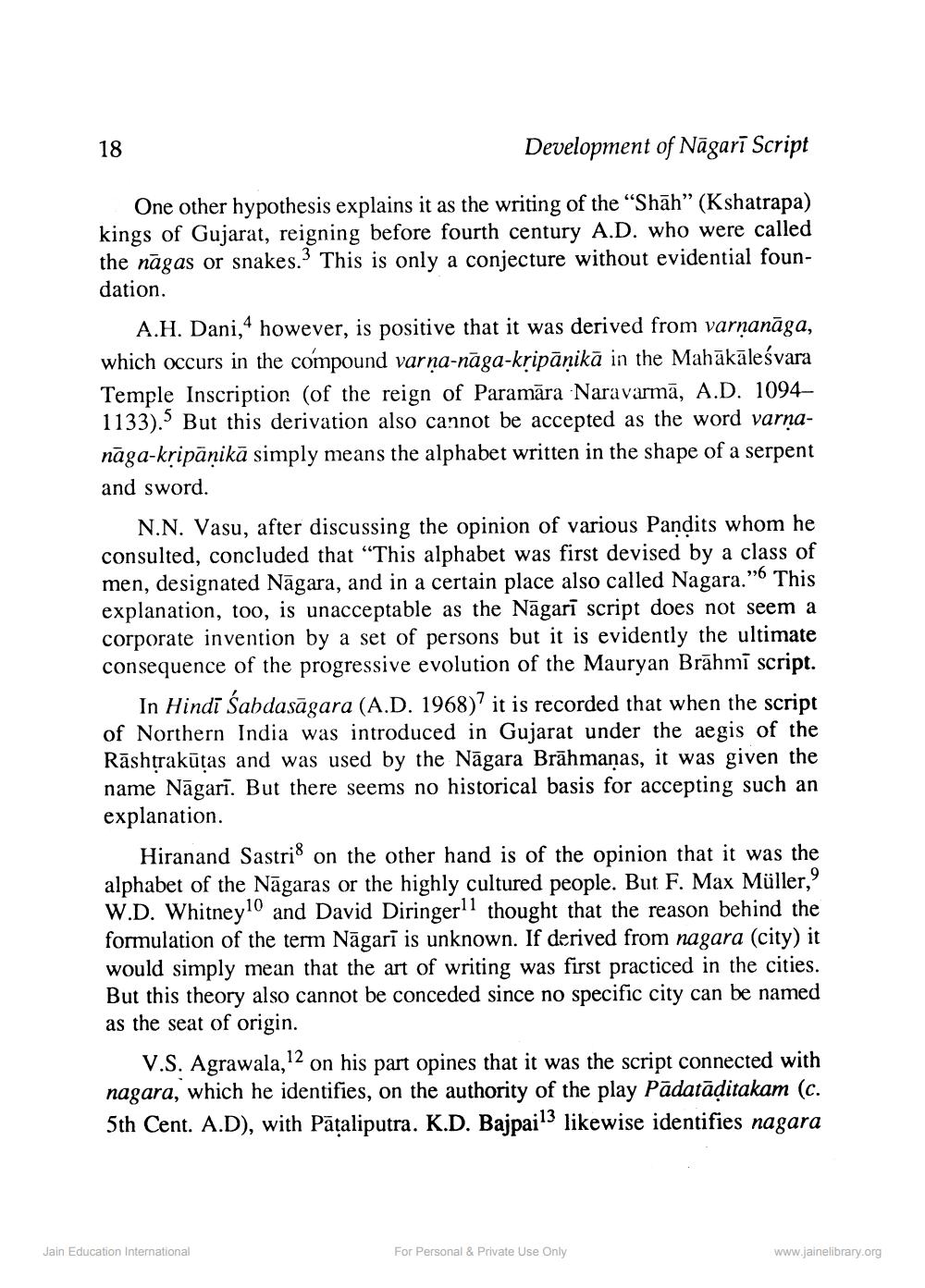________________
Development of Nāgarī Script
One other hypothesis explains it as the writing of the "Shāh” (Kshatrapa) kings of Gujarat, reigning before fourth century A.D. who were called the nāgas or snakes. This is only a conjecture without evidential foundation.
A.H. Dani, however, is positive that it was derived from varṇanāga, which occurs in the compound varṇa-nāga-kripānikā in the Mahākāleśvara Temple Inscription (of the reign of Paramāra Naravarmā, A.D. 1094– 1133).' But this derivation also cannot be accepted as the word varnanāga-kripānikā simply means the alphabet written in the shape of a serpent and sword.
N.N. Vasu, after discussing the opinion of various Pandits whom he consulted, concluded that “This alphabet was first devised by a class of men, designated Nāgara, and in a certain place also called Nagara." This explanation, too, is unacceptable as the Nāgari script does not seem a corporate invention by a set of persons but it is evidently the ultimate consequence of the progressive evolution of the Mauryan Brāhmi script.
In Hindi Sabdasāgara (A.D. 1968)? it is recorded that when the script of Northern India was introduced in Gujarat under the aegis of the Rāshtrakūtas and was used by the Nāgara Brāhmanas, it was given the name Nāgari. But there seems no historical basis for accepting such an explanation.
Hiranand Sastris on the other hand is of the opinion that it was the alphabet of the Nāgaras or the highly cultured people. But F. Max Müller, W.D. Whitneylo and David Diringerll thought that the reason behind the formulation of the term Nāgari is unknown. If derived from nagara (city) it would simply mean that the art of writing was first practiced in the cities But this theory also cannot be conceded since no specific city can be named as the seat of origin.
V.S. Agrawala, 12 on his part opines that it was the script connected with nagara, which he identifies, on the authority of the play Pädatāạitakam (c. 5th Cent. A.D), with Pātaliputra. K.D. Bajpai 13 likewise identifies nagara
Jain Education International
For Personal & Private Use Only
www.jainelibrary.org




